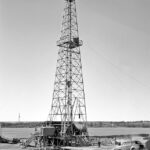In the world of construction, safety and stability are paramount. To ensure the structural integrity of buildings and other structures, engineers employ a variety of techniques, one of which is bracing. Bracing refers to the use of additional support elements to enhance a structure’s ability to withstand various forces, such as wind, seismic activity, and loads. In this article, we’ll delve into the different types of bracing commonly used in construction projects.
What is a Bracing?
Bracing, in the context of construction and engineering, refers to the installation of additional structural elements within a building or structure to enhance its stability and ability to withstand various types of forces. These forces can include lateral loads, such as wind and seismic forces, as well as vertical loads from gravity. Bracing elements are strategically placed to redistribute these forces and prevent the structure from experiencing excessive deflection, deformation, or collapse. Bracing can take various forms, such as diagonal members, shear walls, and other specialized configurations, all aimed at improving the overall structural integrity of the construction.
Purpose of Bracing
The primary purpose of bracing in construction is to enhance the stability and structural integrity of buildings and other structures by providing additional support and resistance against various forces. These forces can arise from external factors like wind, seismic activity, and snow loads, as well as internal factors such as occupant loads and equipment.
Here are the key purposes of bracing:
Lateral Load Resistance:
Bracing is crucial for withstanding lateral loads, which are forces that act horizontally on a structure. Wind and seismic forces are common sources of lateral loads. Bracing elements distribute these forces throughout the structure, preventing excessive swaying or tilting that could lead to structural failure.
Preventing Deformation:
Lateral loads can cause deformations or displacements in a structure. Bracing helps control these deformations by redirecting the forces and minimizing any excessive movement that could compromise the integrity of the building.
Reducing Vibration:
In areas prone to high winds or earthquakes, structures can experience vibrations that may affect occupant comfort and safety. Bracing absorbs and dissipates energy from vibrations, reducing their impact and ensuring stability.
Mitigating Shear Forces:
Shear forces occur when one part of a structure slides against another. Bracing, especially diagonal and shear wall bracing, resists shear forces and prevents failure along potential weak points.
Enhancing Seismic Performance:
Earthquakes generate complex forces that can lead to catastrophic failures. Bracing systems, especially those designed for seismic resistance, help structures remain resilient during seismic events by absorbing and dissipating seismic energy.
Maintaining Vertical Load Distribution:
Bracing can help distribute vertical loads, such as those from the building’s own weight and occupant loads, more evenly throughout the structure. This prevents localized stress concentrations that could weaken specific elements.
Architectural Design Considerations:
While primarily functional, bracing can also contribute to a building’s aesthetic appeal. Creative bracing designs can add unique architectural features to a structure while still fulfilling their primary role in ensuring stability.
Cost-Effective Solution:
In some cases, bracing can be a cost-effective way to enhance a building’s stability without significantly increasing the size or complexity of other structural components.
Preserving Longevity:
Properly designed and implemented bracing systems can extend the lifespan of a structure by reducing the wear and tear caused by excessive movement and stress.
Types of Bracing Systems
Bracing systems in the construction industry can be classified based on various parameters such as the plane of bracing, the shape of bracing, etc.
Bracing Types based on Plane of Bracing
Bracing types can be categorized based on the plane in which the bracing elements are installed within a structure. The plane of bracing refers to the direction in which the bracing members are oriented to resist specific forces. Here are the main types of bracing based on the plane of bracing:
Horizontal Bracing:
Horizontal bracing involves installing bracing elements in a horizontal plane to resist lateral forces acting parallel to the ground. This type of bracing is particularly effective in preventing sway and maintaining stability. Horizontal bracing can include techniques such as:
- Wind Bracing: Positioned horizontally, wind bracing is installed to counteract wind loads that exert horizontal forces on the structure. It is commonly used in tall buildings and areas prone to strong winds.
- Portal Frames: These are rigid frames that provide horizontal stability to the building. They consist of columns and beams, often forming a rectangular portal shape, which resists lateral forces.
There are two types of horizontal bracing systems; Diaphragm Bracing and Discrete Triangulated Bracing
Diaphragm Bracing: Diaphragm bracing is a type of structural bracing system that involves the use of a continuous and rigid horizontal surface, known as a diaphragm, to distribute lateral loads across the building. This diaphragm can be a floor slab, roof, or even a horizontal truss. It acts as a large horizontal shear plane that transfers lateral forces, such as wind and seismic loads, to the vertical bracing elements or shear walls. Diaphragm bracing provides stability and prevents the building from swaying excessively during various loading conditions. Common examples of diaphragm bracing include using concrete slabs in reinforced concrete structures or metal decks in steel-framed buildings.
Discrete Triangulated Bracing: Discrete triangulated bracing refers to a structural bracing system composed of individual diagonal members that form triangular configurations within the building’s framework. These triangles are strategically positioned to provide stability against lateral forces. The triangulated arrangement enhances the structure’s ability to resist bending, shear, and torsional forces, contributing to overall stability. This type of bracing is often seen in the form of diagonal beams or columns that intersect at specific nodes within the building’s framework. The intersections create rigid connections that effectively distribute forces and prevent the structure from swaying or deforming. Discrete triangulated bracing is commonly used in both steel and concrete buildings, and its modular design allows for flexibility in adapting to various architectural and engineering requirements.
Vertical Bracing:
Vertical bracing involves installing bracing elements in a vertical plane to resist lateral forces acting perpendicular to the ground. Vertical bracing is often used to prevent buildings from swaying excessively during earthquakes and other seismic events. Techniques include:
- Shear Walls: Vertical walls designed to absorb and redistribute lateral loads. Shear walls are especially effective in areas with high seismic activity.
- Core Bracing: In high-rise buildings, a central core can serve as a vertical bracing element, providing stability against lateral forces.
Types of Bracing Based on Shape
Based on share there are various types of bracing used in construction. Some of them are:
1. Diagonal Bracing:
Diagonal bracing is one of the most fundamental types of bracing used in construction. This technique involves installing diagonal members, often made of steel, across the corners of a structure. These diagonal members effectively transfer lateral loads, such as wind or seismic forces, from one part of the structure to another. Diagonal bracing provides stability and prevents swaying, reducing the risk of structural failure.
2. Knee Bracing:
Knee bracing, also known as shear bracing, is employed in steel-framed structures. This type of bracing consists of diagonal members that connect beams or columns to the main vertical members. Knee bracing helps to distribute the lateral loads and shear forces evenly, enhancing the overall stability of the structure. It’s commonly used in buildings with large open spaces, such as warehouses and industrial facilities.
3. Cross Bracing:
Cross bracing involves the installation of diagonal members in an X-shaped pattern across the exterior walls of a building. These diagonal members intersect at the middle of the wall’s height and provide substantial resistance against lateral loads. Cross bracing is not only functional but also architectural, as it can be incorporated into the building’s design to create visually appealing patterns.
4. Buckling-Restrained Braces:
Buckling-restrained braces are advanced bracing elements designed to resist lateral loads while preventing buckling, which is a common failure mode in traditional braces. These braces consist of an inner core that yields under load and an outer casing that restrains buckling. They provide an excellent balance between strength and flexibility, making them suitable for areas with high seismic activity.
5. V-Bracing:
V-Bracing is a type of structural bracing system used in buildings and other structures to provide lateral stability against horizontal forces, such as wind and seismic loads. It gets its name from the shape it creates, resembling the letter “V.” In V-bracing, diagonal members are installed in a V-shaped configuration between columns or beams. These diagonal members are designed to absorb and distribute lateral loads, preventing excessive swaying or deformation of the structure.
V-bracing is effective in resisting both tension and compression forces, making it suitable for various structural systems. The diagonal members are typically installed at specific intervals along the height of the building, and their angle and placement depend on the structural requirements and the magnitude of the lateral forces expected in that location.

6. K-Bracing:
K-Bracing, similar to V-Bracing, is a type of structural bracing system used to provide lateral stability to buildings and structures. The name “K-Bracing” comes from the shape it creates, resembling the letter “K.” In K-bracing, diagonal members are installed in a zigzag pattern between columns or beams. This arrangement forms a series of connected K-shapes, which help distribute lateral loads and prevent structural sway.
K-bracing is known for its effectiveness in resisting compression forces and its ability to maintain stiffness in the structure. The angles of the diagonal members, as well as the number of zigzag segments, are determined based on engineering calculations that consider the anticipated forces and load distribution.
7. Inverted V Bracing:
Inverted V bracing is a type of diagonal bracing used in multi-story buildings. It involves creating an inverted V-shaped configuration with diagonal members that extend from the columns on each floor to a common node near the top of the building. This configuration effectively transfers lateral forces from upper floors to lower ones, enhancing stability.
8. Inclined Bracing:
Inclined bracing involves installing diagonal bracing elements that are neither strictly horizontal nor vertical. These braces offer a combination of horizontal and vertical stability and are commonly used in applications where the load direction is not strictly aligned with either axis.
9. Eccentric Bracing:
Eccentric bracing involves positioning bracing elements away from the center of the structural members they are attached to. This design provides enhanced energy dissipation during seismic events, improving the structure’s seismic performance.
10. Combined Bracing:
Complex structures often require a combination of different bracing types to ensure overall stability. Engineers may strategically place bracing elements in various planes to effectively counteract the specific forces that the structure may encounter.
What is the Meaning of the Bracing Plan?
Bracing plans are integral components of structural engineering and architectural design that detail the arrangement, type, and location of bracing systems within a building or structure. These plans provide a comprehensive visual representation of how the structure will resist lateral forces, such as wind, seismic loads, and other horizontal pressures.
Bracing plans typically include the following elements:
- Bracing Types: The plan outlines the types of bracing that will be used, such as X-bracing, K-bracing, diagonal straps, shear walls, or other specialized bracing systems. The chosen bracing type depends on factors like the building’s height, occupancy, anticipated loads, and architectural design.
- Bracing Layout: The plan illustrates the layout of bracing members within the structure. This includes the arrangement of diagonal members, their orientation, and their connection points to columns, beams, or other structural elements.
- Spacing and Location: The plan indicates the spacing between bracing members and their precise locations on each floor or elevation. This ensures that the bracing system provides uniform lateral stability throughout the building.
- Node Details: Bracing plans often highlight specific nodes where diagonal members intersect or connect to columns and beams. These nodes are critical points of load transfer and often require specialized connections for optimal performance.
- Connection Details: The plan may include details about how the bracing members are connected to columns, beams, or other structural elements. Proper connections are crucial to ensure that the bracing system functions as intended.
- Sizes and Materials: The plan might specify the sizes and materials of the bracing members. This information ensures that the bracing elements have the required strength and stiffness to handle anticipated forces.
- Coordination with Architectural Elements: Bracing plans need to consider architectural elements such as windows, doors, and open spaces. They should be coordinated in a way that maintains both structural integrity and architectural aesthetics.
- Seismic Zones and Design Criteria: If the structure is located in a seismic zone, the bracing plan will reflect the specific seismic design criteria and requirements that the structure must meet.
Bracing plans are an essential communication tool between architects, structural engineers, and construction teams. They guide the installation process, ensure that the structure meets safety standards, and contribute to the overall stability of the building. Properly executed bracing plans play a critical role in creating structures that are both safe and functional, capable of withstanding various lateral loads and external forces.
Conclusion
Bracing plays a pivotal role in ensuring the safety and resilience of modern structures. From diagonal and knee bracing to shear walls and buckling-restrained braces, each type of bracing serves a unique purpose in mitigating the impact of lateral forces. By understanding and implementing these various bracing techniques, engineers and construction professionals continue to push the boundaries of architectural innovation, creating structures that are both aesthetically pleasing and structurally sound.






